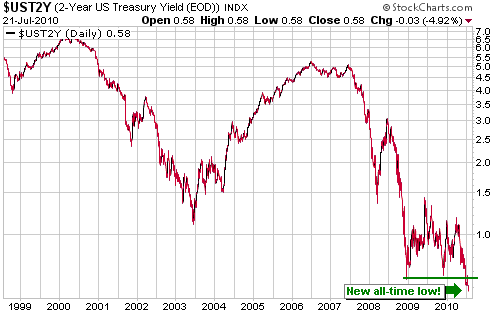|
|||
The Decade CycleSteve Saville Below is an excerpt from a commentary originally posted at www.speculative-investor.com on 22nd July, 2010. In our 5th August 2009 commentary we discussed the strong tendency for one of the most dominant investment themes of a decade to make a 'blow-off top' during the final few months of the '9' year or the first half of the '0' year. At that time we thought that the best candidates for a 2009-2010 speculative bubble peak were gold, the currencies (a blow-off move to the downside in the US$ and corresponding blow-off moves to the upside in the euro, SF, A$ and C$), government debt, and China. Of these, we thought that gold and the currencies were the LEAST likely prospects, our reasoning being that the US$ had most likely bottomed back in April of 2008 and that gold's long-term bull market probably still had at least a few years left to run (major upside blow-offs usually don't occur until the very ends of long-term trends). In other words, we viewed the 'China story' and government debt as the two most likely candidates for "bubble of the decade".
As far as the new decade's major trends are concerned, our views haven't changed. Specifically, we continue to believe that the most important rising trends will be those of gold and "alternative energy", and that the most important downward trend will be in government debt. Also, this is a good time to reiterate the following: the historical record suggests that the first markets to make new 52-week highs after October of 2010 will be the most likely candidates for 5-10 year bullish trends, whereas the first markets to make new 52-week lows after October of 2010 will be good candidates for 5-10 year bearish trends. Therefore, regardless of what we THINK is going to happen over the course of this decade, we should take heed of which markets are first to make new 52-week extremes after October of this year. ### Steve Saville Regular financial market forecasts and analyses are provided at our web site: We aren't offering a free trial subscription at this time, but free samples of our work (excerpts from our regular commentaries) can be viewed at: http://tsi-blog.com Saville Archives |

